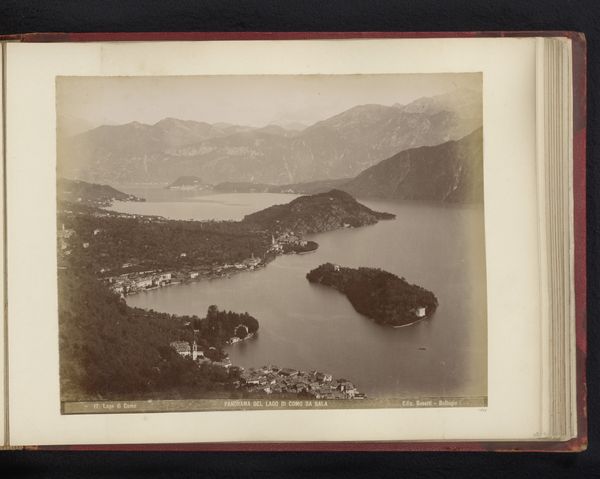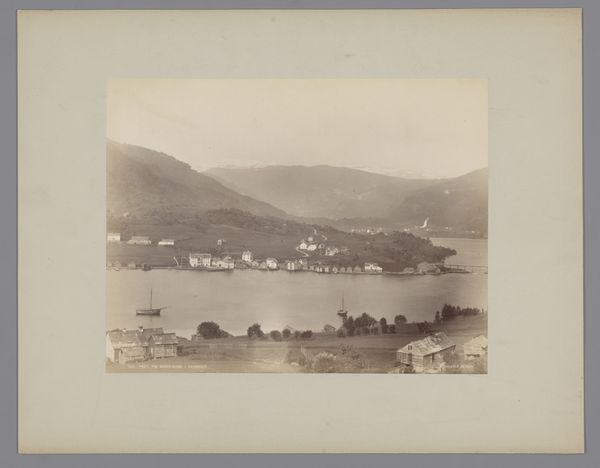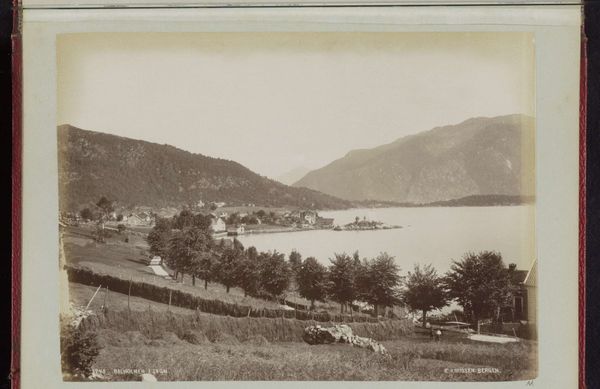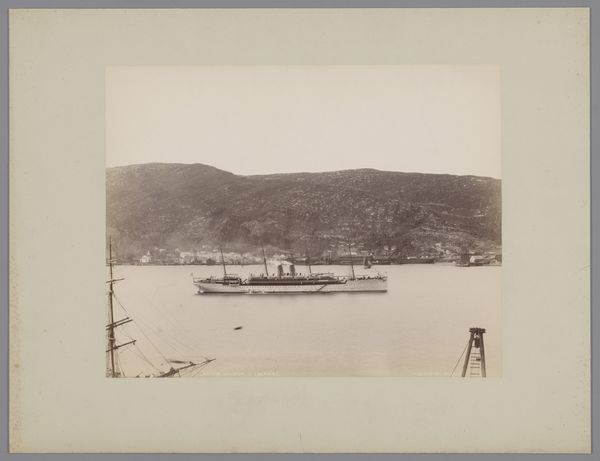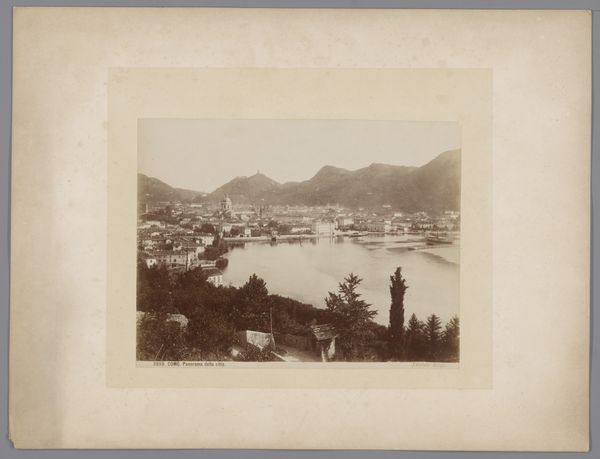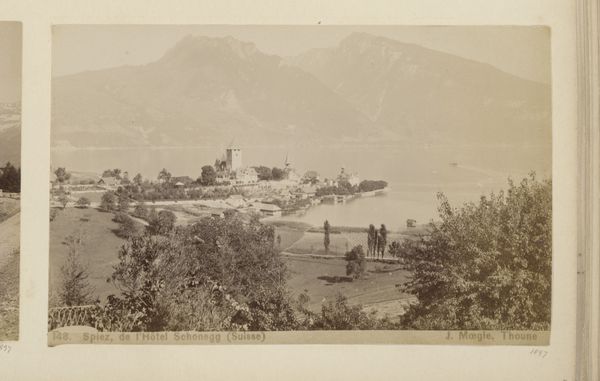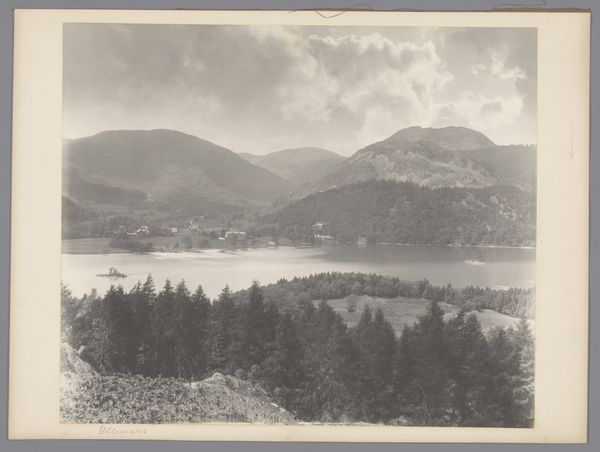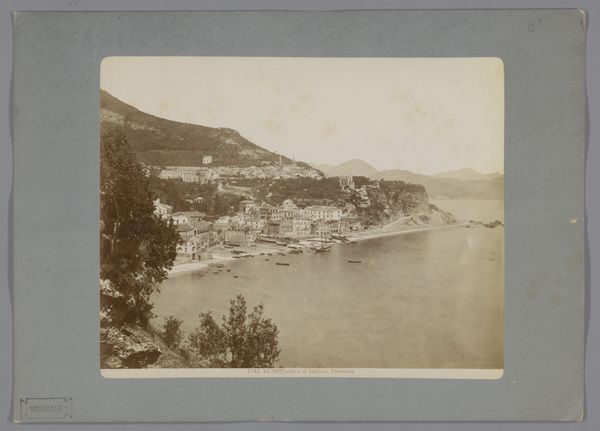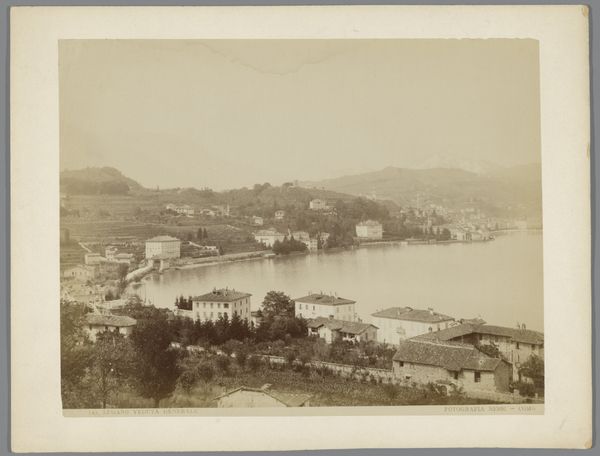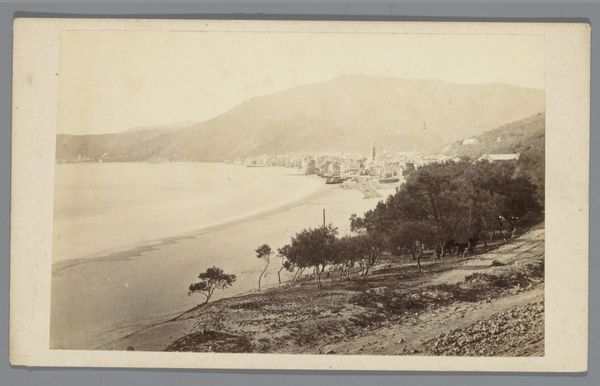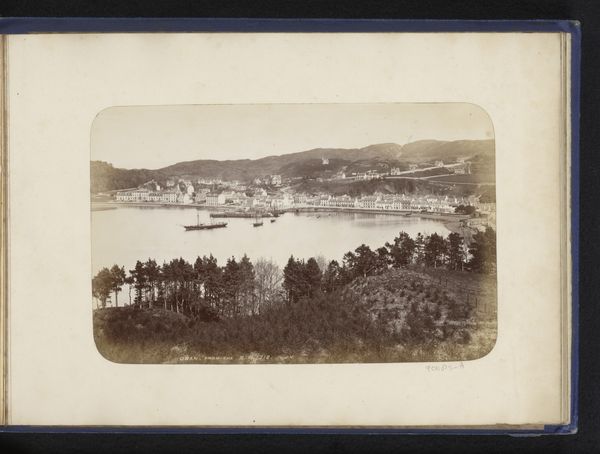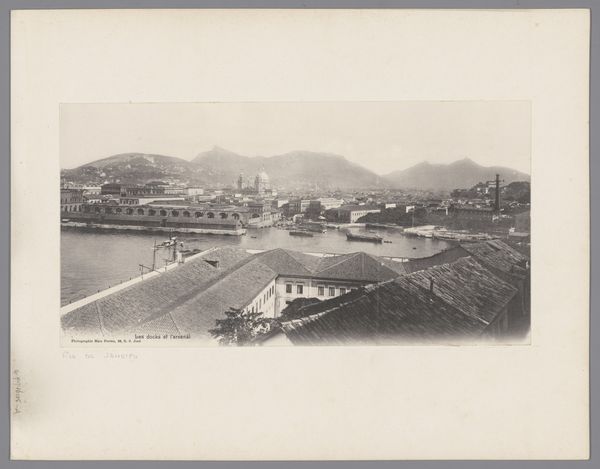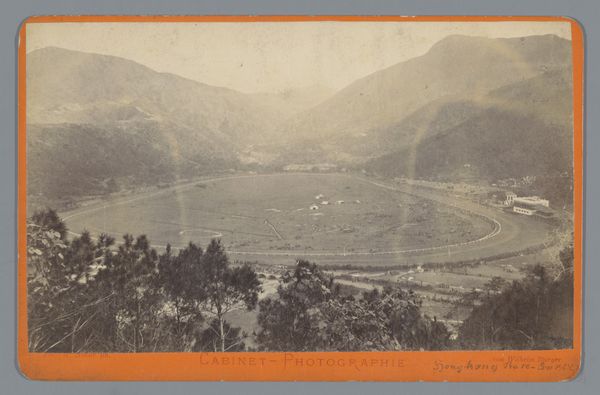
photography, gelatin-silver-print
#
lake
#
landscape
#
photography
#
gelatin-silver-print
#
italian-renaissance
#
realism
Dimensions: height 115 mm, width 169 mm
Copyright: Rijks Museum: Open Domain
Editor: So, here we have Antonio Nessi's "Gezicht op het Comomeer," taken sometime between 1860 and 1870, a gelatin-silver print. It’s quite striking; there’s a stillness to the scene. What stands out to you when you look at it? Curator: The albumen print reveals the burgeoning tourist industry around Lake Como in the mid-19th century. I’m particularly drawn to the means of production here. Think about the photographer lugging equipment – glass plates, chemicals, darkroom tents – to capture this vista. This image isn’t just about picturesque beauty; it’s about the labor involved in constructing and commodifying that view for a growing market of consumers. How does the physical reality of this photographic process shape your understanding of the image? Editor: That’s a really interesting point, I hadn't considered the logistics of early photography! It makes me think about accessibility too. Who was consuming these images, and what did owning a view of Lake Como signify for them? Curator: Exactly! Consider the social context: photography democratized image production to some extent, yet the consumption of these idyllic landscapes likely remained a privilege of the burgeoning middle class. The photograph itself becomes a commodity, bought and sold, reinforcing a specific vision of Italian beauty connected to leisure and consumption. What is being consumed, the view, or an idea? Editor: I guess it’s both. The view itself and the lifestyle it represents. Seeing it now, through that lens, makes me question the romanticism I initially felt. It's become another consumer product to fuel the dreams of potential middle class clients looking for "la dolce vita" far away from industrialising London. Curator: Precisely. We start with an attractive image but by reflecting on production and consumption we can appreciate its deeper complexities as a physical artifact of a specific socio-economic moment. Editor: Thank you. This has provided a lot to consider about historical contexts of photographic art.
Comments
No comments
Be the first to comment and join the conversation on the ultimate creative platform.
